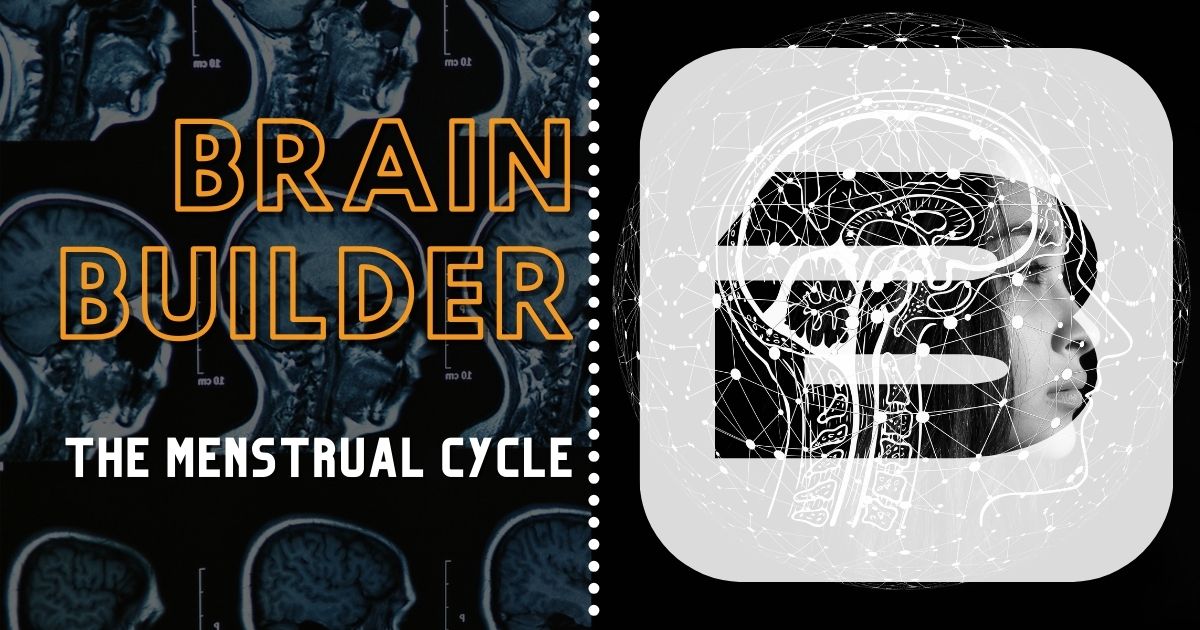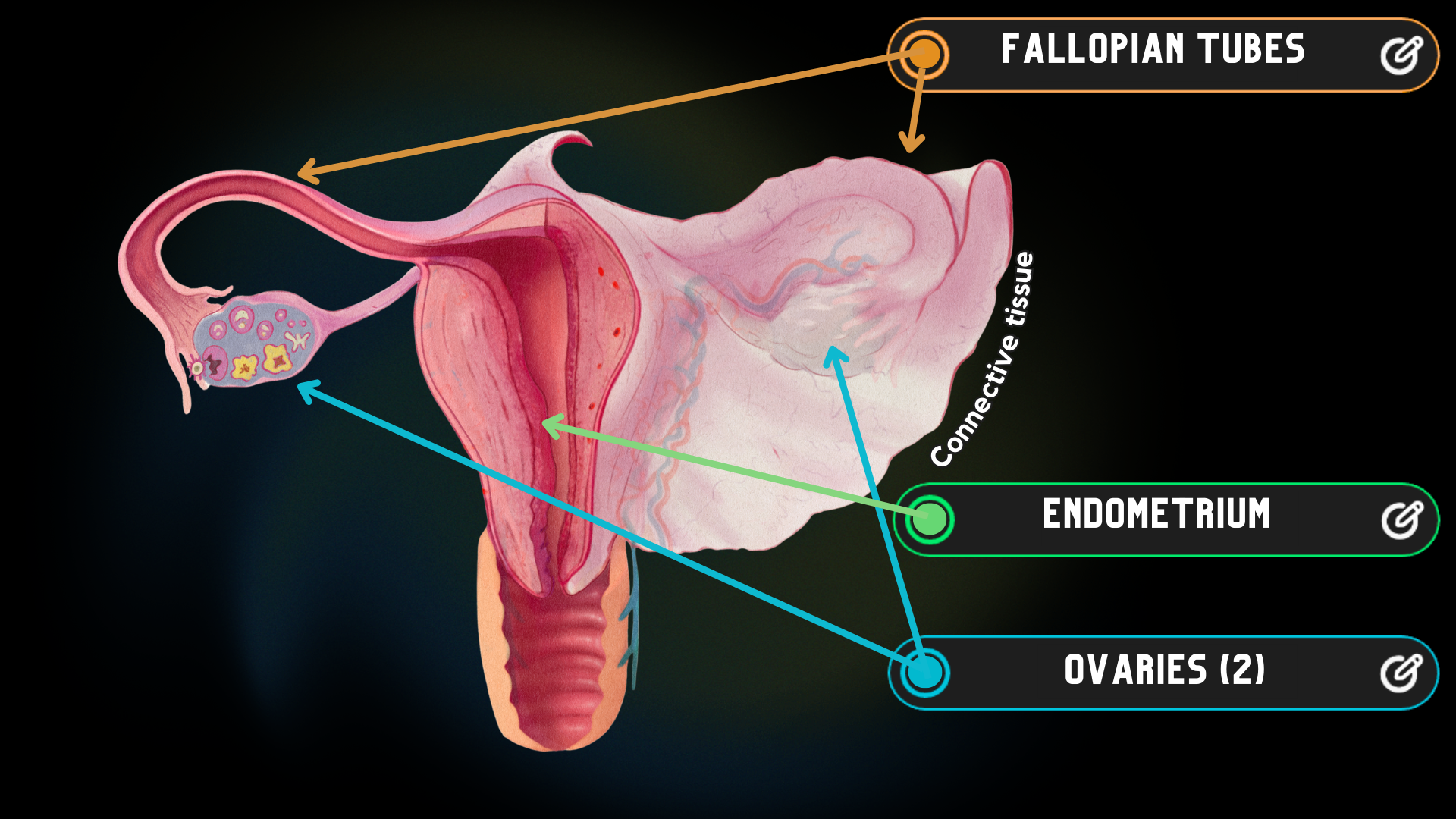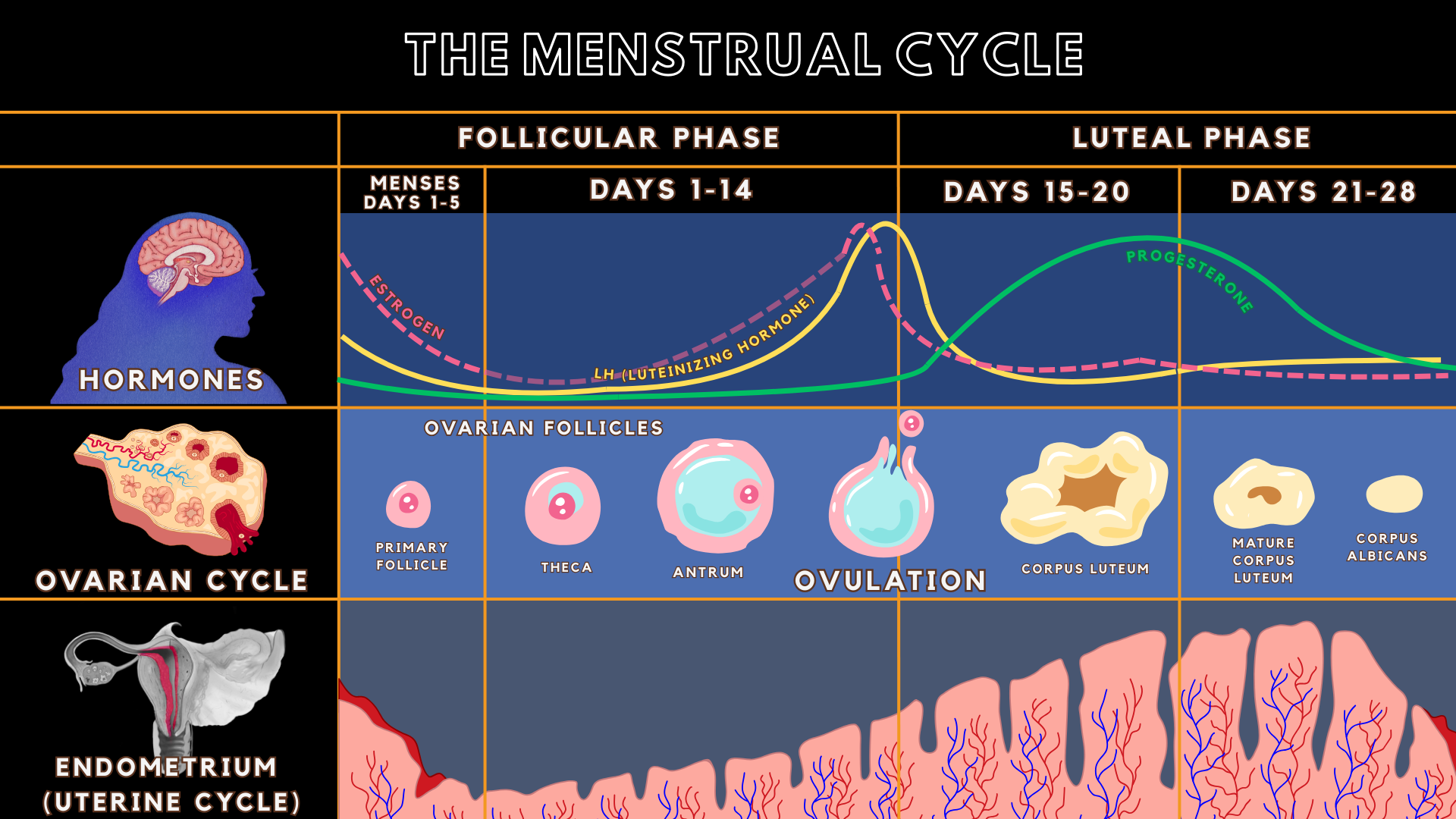The Menstrual Cycle | BodyViz Brain Builder
by Susan Terry, MS | August 18, 2025

Case study video explaining the menstrual cycle with a patient example!
Use the button below to schedule a demo to learn about our quizzes, flash cards, and other anatomy resources that support this Brain Builder!
Schedule a Demo
Overview
Did you know that on average, a woman will have her menstrual period 450 times? If a woman gives birth to five children, with no multiple births, she would have been pregnant for nearly four years total. In this Brain Builder, you will learn about the phases of the menstrual cycle and how hormones control it. You will also learn how problems with the menstrual cycle are diagnosed and treated.
Background Information
The menstrual cycle is an important part of female health, growth, and reproduction. The menstrual cycle begins at puberty. On average, a female begins her menstrual cycle at about age 12. More accurately, her menstrual cycle will begin about two years after axillary hair growth, pubic hair growth, and breast development begin. This may be several years earlier or later than age 12.
The average length of the menstrual cycle is 28 days, but the length can vary between 21 days and 40 days depending on the individual. This overview will align with a typical 28-day cycle length. Cycles can be irregular at first but tend to become more regular as a female gets older. The cycle is regulated by the rising and falling levels of certain hormones: follicle-stimulating hormone (FSH), luteinizing hormone (LH), estrogen, and progesterone. The hypothalamus gland releases gonadotropin-releasing hormone (GnRH), which causes the pituitary gland to release FSH and LH. FSH and LH target the ovaries, signaling one egg to begin maturing in a follicle, beginning the menstrual cycle. The menstrual cycle has four phases: menses, follicular phase, ovulation, and the luteal phase.
Core Concepts
A female has two ovaries that produce eggs. The egg is released into the fallopian tube, where it travels down to the uterus. The uterus has a lining called the endometrium, which thickens during the cycle to prepare for possible implantation of a fertilized egg.

A woman is born with all the eggs she will have. Each egg is housed within a follicle in the ovary. Each month, FSH triggers one egg to begin maturing in its ovarian follicle. The egg is surrounded by fluid in the follicle.
The first day of the cycle occurs when the uterus begins to discharge its lining. This phase is called menses. This continues for an average of four days, but may only go for two days or up to seven days. During menses, the estrogen level is low, and the progesterone level is also low. The uterine lining is shed. Around day 6, the estrogen level rises, and the level of follicle-stimulating hormone begins falling. Common body symptoms during this phase include cramps, bloating, breast tenderness, mood swings, and irritability.
Menses occur during the 14-day follicular phase of the menstrual cycle. The lining of the uterus increases in thickness while the egg is maturing in the follicle in the ovary.
Ovulation, the release of an egg into the fallopian tubes, happens when the estrogen level spikes at the midpoint of the menstrual cycle. This usually occurs around day 14 of the menstrual cycle. Follicle-stimulating hormone level declines, then increases slightly. The time when an egg is released from the ovary is the time when a woman can conceive an embryo if sperm are present. One sign of ovulation is a thicker vaginal mucus discharge.
The luteal phase occurs from day 15 to day 28 of the menstrual cycle. The follicle in the ovary becomes a corpus luteum, which produces progesterone. The level of progesterone rises, causing the uterine lining to thicken even more to prepare for a fertilized egg to implant in its lining. If there is no fertilized egg present, estrogen and progesterone levels fall, triggering menses. Common body changes during the luteal phase include cramps, bloating, breast tenderness, headache, and food cravings. Some women notice differences with their skin, seeing an increase in pimples and oiliness during the ovulation phase. Other women notice increased emotional sensitivity during the menstrual phase.

Variations in the Menstrual Cycle
The length of the menstrual cycle, as well as the heaviness of menstrual flow, can be affected by different stimuli. Stress can cause menses to be delayed. Females with eating disorders may have never experienced menses or may stop experiencing menses. Here are some possible variations in the menstrual cycle:
- Amenorrhea: The complete lack of a menstrual cycle can be a result of over-training as an elite athlete, having anorexia, which stops the menstrual cycle due to malnutrition, or potentially genetic disorders. It could also be menopause, if the patient is in their late 40s or early 50s, or pregnancy, if pregnancy symptoms are present.
- Irregular menstrual cycle: An irregular cycle can be caused by stress, nutrition issues, hormone levels, certain medications, and undiagnosed health problems.
- Heavy bleeding during menses: Heavy flow can be caused by hormone imbalances or fibroids in the uterus.
- Endometriosis: a condition where uterine tissue grows outside the uterus and attaches to other organs. Symptoms of this condition include pain and infertility issues.
- Polycystic ovarian syndrome (PCOS): PCOS can cause irregular cycles, increased levels of androgen (male) hormones, hair loss, increased acne, and fertility issues.
- Menopause: The cessation of the menstrual cycle occurs when a female’s body makes much less estrogen and progesterone.
- Fibroids: These are noncancerous masses in the wall of the uterus. These can cause pain and heavy menstrual flow.
Any woman who has menstrual irregularities, loses their menstrual cycle, or experiences other symptoms mentioned above, such as pain, heavy flow, or pregnancy symptoms, should see their doctor as soon as possible. Regular health care can help calm or alleviate symptoms.
Diagnostic Tests for Variation in the Menstrual Cycle
1. Physical Examination
The physician will ask the patient questions about lifestyle, nutrition, exercise, sexual activity, and other factors. If pain is the main reason for making an appointment, the physician will ask for the location, duration, and intensity of the pain. Next, the doctor examines the patient and will probably perform a pelvic exam, checking for any physical abnormalities.
2. Blood work testing hormone levels, which can include:
- Thyroid hormones: Low levels of thyroid hormones can cause menstrual irregularity.
- Pregnancy test: A pregnancy test checks for the presence of hCG (human chorionic gonadotropin), which is a hormone secreted by the placenta.
- FSH and LH: High levels indicate problems with the ovaries, while low levels may mean issues with the pituitary gland or hypothalamus.
- Prolactin: Elevated levels of prolactin can indicate pregnancy or a pituitary gland problem.
- Estrogen and progesterone: Low levels can cause irregular periods or indicate the beginning of menopause in older women. High estrogen may indicate fibroids or cancer.
3. Imaging of the pelvic area
The CT, MRI scan, or pelvic ultrasound will provide images of any growths or blockages present in the reproductive organs. If present, cysts, fibroids, and tumors will all be noticeable on the scans.
4. Prescribing medication
- Ibuprofen or acetaminophen is often suggested for mild pain.
- Birth control pills can be used to make the cycle more regular.
- Metformin can be used to reduce high insulin levels and correct menstrual cycle irregularity in women with PCOS.
- Progesterone can help reduce heavy menstrual flow.
- Using warm compresses or cold compresses can help reduce pain.
Treatments of Variation in the Menstrual Cycle
- Birth control pills: Pills containing estrogen and progesterone change the menstrual cycle by preventing the ovary from releasing an egg. The pills also cause changes in the uterus, so it will not be able to support a pregnancy. Birth control pills can make it easy to predict the time of bleeding because the pack of pills has 23 hormone pills and five nonhormone pills. With the withdrawal of hormone treatment, the lining of the uterus will be discharged. It is important to note that antibiotics can prevent birth control pills from being effective. Birth control pills can have negative side effects such as spotting between periods, heavier or lighter periods, breast tenderness, nausea, and bloating. Birth control pills can also cause high blood pressure.
- Nutritional and psychiatric counseling: In females with eating disorders, regaining the menstrual cycle will require increasing calories and gaining weight.
- Endometrial ablation: Destroying part of the endometrium with heat, by freezing it, or using electricity to stop heavy menstrual bleeding
- Surgery: Surgical procedures can involve removing the entire female reproductive system (complete hysterectomy) or just taking the uterus while leaving the ovaries (partial hysterectomy). These surgical procedures do not return the typical menstrual cycle.
Key Terms:
Menopause - The time when the menstrual cycle completely stops.
Amenorrhea - The complete lack of a menstrual cycle in a female.
Puberty - Physical and hormonal changes that indicate a child is becoming an adult.
Menses - The tissue and menstrual blood that pass out of the uterus.
Polycystic ovarian syndrome - A condition where there are cysts present on the exterior of the ovary.
Fibroids - Noncancerous growths in the uterus.
Endometriosis - Uterine tissue grows outside the uterus and attaches to other organs.
Hysterectomy - Surgical removal of at least one of the following: ovaries, fallopian tubes, uterus, and cervix.
Schedule a demo today to learn how you can incorporate BodyViz into your classes and give your students the opportunity to practice using the information from this Brain Builder on real patients with authentic 3D dissection!
Schedule a Demo
Helpful Links: